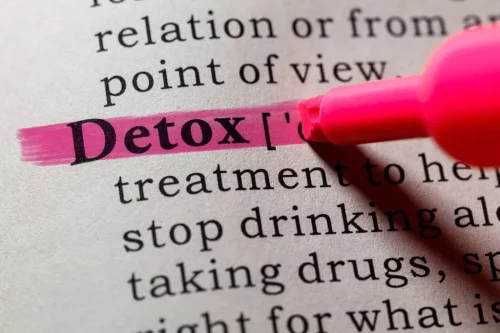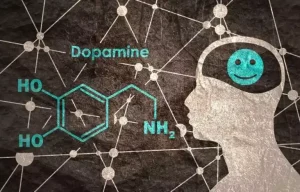Alcohol Use Disorder: A Comparison Between DSM IV and DSM 5 National Institute on Alcohol Abuse and Alcoholism NIAAA

In 2013, the DSM-5 officially combined alcohol abuse and alcohol dependence into one diagnostic definition — AUD. Notably, this update added craving alcohol and eliminated experiencing legal problems as symptoms, https://ecosoberhouse.com/ and also described a spectrum of mild, moderate, and severe AUD (4). Brief tools are available to help non-specialists assess for AUD and screen for common co-occurring mental health conditions.

Alcohol misuse

She has worked in inpatient settings as well as provided community nursing as a Nurse Practitioner. Kelly brings empathy to an underserved population and her clients share that they feel listened to without judgement. Thankfully, substance abuse treatment programs like Moving Mountains Recovery Center provide individuals with a safe and comfortable place to recover from alcoholism. Another difference between AUD and alcoholism is that alcohol use disorder defines the severity of an individual’s disordered drinking, whereas, alcoholism is an umbrella term for problem drinkers. Reuters also notes that a key difference between alcoholics and alcohol abusers is the dependency.

Take The First Step to a New Life
All condition, treatment and wellness content is medically reviewed by at least one medical professional ensuring the most accurate information possible. Seek immediate medical care (call 911) if you, or someone you are with, have life-threatening symptoms related to complications of alcoholism. These include confusion, lethargy, unresponsiveness, difficulty breathing, seizure, delusions or hallucinations, vomiting blood or heavy rectal bleeding, or feelings of wanting to hurt or kill oneself or another person. Cirrhosis of the liver is the best-known physical complication of alcoholism. Chronic abuse of alcohol can also cause serious mental health issues and cause damage to the digestive, neurological, reproductive and cardiovascular systems. It is important to note that treatment effectiveness can be influenced by factors such as the severity of alcohol use, the presence of co-occurring disorders, and the individual’s socio-economic status.
How do you know if you have AUD?
According to the Centers for Disease Control and Prevention (CDC), moderate drinking is typically defined as two drinks or fewer for men per day, or one drink or less for women. Jessica graduated from the University of South Florida (USF) with an English degree and combines her writing expertise and passion for helping others to deliver reliable information to those impacted by addiction. Informed by her personal journey distinguish between alcohol abuse and alcoholism to recovery and support of loved ones in sobriety, Jessica’s empathetic and authentic approach resonates deeply with the Addiction Help community. According to the World Health Organization’s Global Status Report on Alcohol and Health 2018, roughly 70 percent of alcohol-attributable deaths happen as a result of health issues. If you or a loved one show signs of overdose, contact your local emergency services immediately.
A person with alcoholism may drink every day, multiple times a day, may start their day with alcohol, end it with alcohol, and may not be able to go a day without drinking. As you might have noticed, none of these criteria specify an amount of alcohol. You may have AUD if you continue to drink despite any physical, emotional, and social consequences you experience. Perhaps you even want to drink less, or stop drinking entirely, but find yourself unable to quit. The most recent edition of the “Diagnostic and Statistical Manual of Mental Disorders (DSM-5)” includes AUD as a mental health diagnosis.
- If you or a loved one show signs of overdose, contact your local emergency services immediately.
- Often, the terms ‘alcohol abuse’ and ‘alcoholism’ are used interchangeably, but they indicate different issues concerning drinking behaviors.
- Because denial is common, you may feel like you don’t have a problem with drinking.
- While you’ll often hear the two terms used to describe the same issue, they’re actually distinct diagnoses.
- Among people with co-occurring AUD and psychiatric disorders, AUD remains undertreated, leading to poorer control of psychiatric symptoms and worse outcomes.
Fast facts about binge drinking
But they don’t have the brain changes and behavior changes that make it hard for them to quit when they want to. Genetic, psychological, social and environmental factors can impact how drinking alcohol affects your body and behavior. Theories suggest that for certain people drinking has a different and stronger impact that can lead to alcohol use disorder. Many people with alcohol use disorder hesitate to get treatment because they don’t recognize that they have a problem. An intervention from loved ones can help some people recognize and accept that they need professional help. If you’re concerned about someone who drinks too much, ask a professional experienced in alcohol treatment for advice on how to approach that person.
- Notably, this update added craving alcohol and eliminated experiencing legal problems as symptoms, and also described a spectrum of mild, moderate, and severe AUD (4).
- More frequently, complete abstinence from drinking is the preferred treatment, as the temptation to over-consume can be difficult for many.
- Other factors, like height and weight, can also have an impact on how alcohol affects you.
- Third, AUD and PTSD have shared risk factors, such as prior depressive symptoms and significant adverse childhood events.
For example, health care experts know that alcoholism is more common in men than women and that it runs in families. Researchers have identified multiple biologic factors (neurotransmitters and brain cell receptors) and candidate genes that may, going forward, unlock the mystery of alcohol addiction. Addressing alcohol abuse and alcoholism requires a multifaceted approach that includes a range of treatment options tailored to individual needs. The National Institute on Alcohol Abuse and Alcoholism (NIAAA) outlines several evidence-based treatments, including behavioral therapies, medications, and support groups.

Physical and Psychological Consequences of Alcohol Abuse
Sign up for text support to receive:

